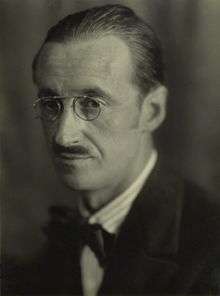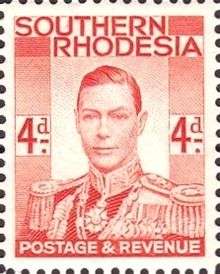Bertram Park


Bertram Charles Percival Park, OBE, (1883-1972) was a portrait photographer whose work included British and European royalty. Engravings of his photographs were widely used on British and British Commonwealth postage stamps, currency, and other official documents in the 1930s. His theatrical portraits were the source for two paintings by Walter Sickert. With his wife Yvonne Gregory, he also produced a number of photographic books of the female nude. He was an expert in the cultivation of the rose and the editor of The Rose Annual.
Early life
Bertram Charles Percival Park was born in Minster, Kent, England, in 1883 to Charles Percival Park and Katharine Mary Park.[1][2] He initially worked in the family firm which made artist's materials.[3]
Family
In 1916, Park married the photographer Yvonne Gregory (1889-1970) at Hampstead[4] and Yvonne became one of his principal models. They had a daughter, Hilary June Park, who was born in Hampstead in 1920.[5] Hilary, known as June, was an architect who married David Francis Rivers Bosanquet in 1941 and divorced him in 1947. Her second marriage was to the Finnish architect Cyril Mardall (1909-1994) in 1947.[6]
Photographic career
In 1910, Park was one of the founders of the London Salon of Photography. In 1919, with funding from the Egytologist Lord Carnarvon, he established studios at 43 Dover Street, London, with his wife Yvonne and the children's photographer Marcus Adams.[3] They shared darkroom staff and facilities and were known as the "Three Photographers".[7]
Park's work included British and European royalty[8] and in 1927 he was made an MBE.[9] In the 1939 Birthday Honours he was made up to OBE.[10] His images were widely used on British and British Commonwealth postage stamps, currency, and other official documents in the 1930s.[11]

Park and Gregory were also noted for their publicity photographs for theatrical productions. In 1924 they photographed the first English production of George Bernard Shaw's Saint Joan starring Sybil Thorndike.[12]
In 1932, Walter Sickert produced his portrait of the actress Miss Gwen Ffrangcon-Davies as Isabella of France, ("La Louve"), directly from a Park photograph without taking any sittings with Ffrangcon-Davies, although they were closely acquainted. The source was acknowledged by Sickert in an inscription on the painting.[13] Park's photograph was in black and white so Sickert was obliged to add colour to the painting, however, he used a restricted palette causing the critic Frank Rutter to describe the work as "practically a monochrome".[14] Sickert also greatly enlarged the proportions, resulting in a finished work of 245 x 92 cm. Unusually, the Tate Gallery acquired the painting the same year after a fund-raising campaign to buy it for the gallery led by the Tate's director, James Bolivar Manson.[13] Sickert joked that it was "only bought for the Tate because of Bertram Park. Another proof that honesty is the best policy".[15]
In 1934, Park and Gregory produced publicity photographs for a production of Hamlet at the New Theatre, London, one of which was the basis for Walter Sickert's 1935 painting Jessica Tandy and John Gielgud in Hamlet (whereabouts unknown).[15] In 1935 they photographed Gielgud's Romeo and Juliet in which Gielgud and Laurence Olivier exchanged the roles of Romeo and Mercutio.[12]
Park and Gregory's theatrical portraits form part of the University of Bristol Theatre Collection.[12]
Park also produced a number of photographic books featuring the female nude and supplied photographs to naturist publications. One of his models was the 1950s glamour model Pamela Green.
Police career
Outside photography, Park was a Commandant in the Metropolitan Special Constabulary and was noted as such in 1927 and 1939.[9][10]
Roses
Park was an expert on the cultivation of the rose about which he wrote many books. He was the editor of The Rose Annual and in 1957 a review in the American Institute of Biological Sciences described his The Guide to Roses, for which he also provided the photographs, as "the last word on roses".[16]
Death and legacy
In later life, Park lived in Pinner, Middlesex, in a house whose grounds he used as a setting for his photography. He died in Pinner in 1972,[1] leaving an estate of £103,322 net.[17] In 1984, his daughter June presented the National Post Museum with an album of 25 pages that Park had created in the late 1940s of his photographs and the stamps based upon them.[11]
Selected publications
Photography
- Living sculpture: A record of expression in the human figure &c., Batsford, London, 1926. (With Yvonne Gregory and G. Montague Ellwood)
- The beauty of the female form, Routledge, London, 1934. (With Yvonne Gregory)
- Sun bathers: A companion volume to "The Beauty Of The Female Form": 48 photographic studies, Routledge, London, 1935. (With Yvonne Gregory)
- Curves and contrast of the human figure, Bodley Head, London, 1936. (With Yvonne Gregory)
- Eve in the sunlight, Hutchinson, 1937. (With Yvonne Gregory)
- A Study of sunlight and shadow on the female form for artists and art students , Bodley Head, London, 1939. (With Yvonne Gregory)
Roses
- Collins guide to roses, Collins, London, 1956.
- The world of roses, Harrap, 1962.
- Roses: The cultivation of the rose, National Rose Society, 1967.
- The rose annual. Multiple editions. (Editor)
See also
References
- 1 2 Bertram Park. The Camera Club. Retrieved 28 August 2015.
- ↑ England, Births & Baptisms 1538-1975 Transcription. findmypast. Retrieved 6 January 2016. (subscription required)
- 1 2 Bertram Park. National Portrait Gallery. Retrieved 8 January 2016.
- ↑ England & Wales marriages 1837-2008 Transcription. findmypast.co.uk Retrieved 28 August 2015. (subscription required)
- ↑ Mardall, June, National Life Story Collection: Architects' Lives, Part 1 of 10. British Library. Retrieved 8 January 2016.
- ↑ "Mardall, Cyril Leonard Sjöström (1909–1994)", Anne Pimlott Baker, Oxford Dictionary of National Biography, Oxford University Press. Online edition. Retrieved 8 January 2016. (subscription required)
- ↑ Marcus Adams. National Portrait Gallery. Retrieved 8 January 2016.
- ↑ Royal Portraits by Bertram Park. Royal Collection Trust. Retrieved 28 August 2015.
- 1 2 The Edinburgh Gazette, 7 June 1927, p. 654.
- 1 2 The Edinburgh Gazette, 13 June 1939, p. 511.
- 1 2 "The Bertram Park legacy", Brian Livingstone, Cross Post, Vol. 15, No. 2, Spring 2014, pp. 14-21.
- 1 2 3 The Bertram Park and Yvonne Gregory Archive. ArenaPAL. Retrieved 29 June 2016.
- 1 2 The Camden Town Group in Context. Walter Richard Sickert Miss Gwen Ffrangcon-Davies as Isabella of France 1932. Tate Gallery. Retrieved 29 June 2016.
- ↑ Rose, Martial. (2003). Forever Juliet: The life and letters of Gwen Ffrancon-Davies, 1891-1992. Guist Bottom, Dereham: Larks Press. p. 61. ISBN 978-1-904006-12-1.
- 1 2 "Newly Discovered Photographic Sources for Walter Sickert's Theatre Paintings of the 1930s", Rebecca Daniels, The Burlington Magazine, Vol. 148, No. 1237 (April 2006), pp. 272-276.
- ↑ Reviewed Work: The Guide to Roses by Bertram Park. AIBS Bulletin, Vol. 7, No. 1 (Jan., 1957), p. 39.
- ↑ "Latest Wills", The Times, 27 February 1973, p. 16.
Further reading
- Interview with Bertram Park, "Photographing Royalty for Stamps", Stamp Collecting, Vol. XLVIII, No. 20, 7 August 1937, pp. 654-656.
External links
- http://www.pamela-green.com/bertram-park-1883-1972/
- http://www.thefreelibrary.com/Iglass+plate+negatives+by+Bertram+Park+and+Yvonne+Gregory.-a0213032102